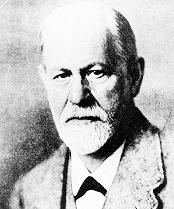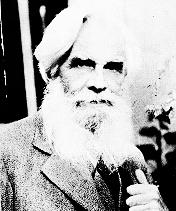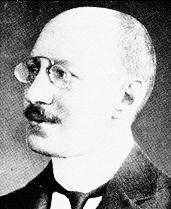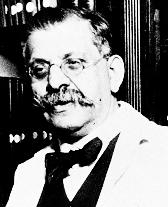|
PIONEERS OF SEX RESEARCH
Specific sex research in the modern, narrow sense originated in the 19th century. This research was begun in several Western countries by men and women of different backgrounds using very different methods. Most of these pioneers had to fight long and hard for public acceptance, and some were even ostracized by their colleagues or persecuted by their governments. Nevertheless, eventually their work proved its usefulness, and today there is a generally recognized body of scientific sexual knowledge which continues to grow.
The scope of the present book does not allow us to list more than a few outstanding scientists. Still, brief and incomplete as it is, this list can perhaps provide some insight into the history and the problems of sex research.
|

|

|
|
Sigmund Freud
|
Havelock Ellis
|
|

|

|
|
Iwan Bloch
|
Magnus Hirschfeld
|
|
Sigmund Freud (1856-1939)
Sigmund Freud, the Austrian physician and founder of the psychoanalytic theory, began his career as a neurologist in Vienna, where he had to treat many so-called hysterical patients. These were people who suffered from some "impossible" physical dysfunction, i.e., according to all standard tests they were healthy and should have been able to function normally. By interviewing such patients over long periods of time, Freud discovered that their mysterious disabilities were caused by unconscious sexual conflicts. This and other discoveries eventually led him to a special form of therapy called psychoanalysis {Greek. Literally: examination of the soul or mind), in which the patient by means of "free association" gradually revealed the hidden source of his problems to the analyst and, most importantly, to himself. Once the conflict was brought "out into the open," and thus became conscious, it could be handled rationally. In this sense, the patient was then "cured/'
The scope of the present text does not allow for a detailed discussion of the psychoanalytic theory which was greatly expanded and repeatedly revised over the years. Freud's writings comprise 24 volumes in their English-language edition, and, to this day, any attempt to popularize his highly sophisticated and complex thinking remains a questionable enterprise, Nevertheless, at least some aspects of Freud's theory are briefly summarized in another part of this book. (See introduction to "The Development of Sexual Behavior".)
Freud was a truly cultivated man of wide-ranging interests, a master prose stylist, and an uncompromising thinker. All of these qualities undoubtedly contributed to his eventual success and international fame. However, at first Freud's theories were not well received at all. The general importance he ascribed to sex and especially his rediscovery of the sexuality of children caused a storm of controversy and made him almost an outcast among his scientific colleagues. At the University of Vienna he became a lecturer and later a professor, but was never given a seat on the faculty. Still, his medical practice, his lectures, and his major books The Interpretation of Dreams (1900), Three Essays on the Theory of Sexuality (1905), Totem and Taboo (1913), and Beyond the Pleasure Principle (1919) secured him a wide following. Moreover, he was able to gather around him several young and brilliant disciples. Over the years, Freud had the satisfaction of seeing the psychoanalytic movement spread all over Europe, although some of his former students eventually broke with him and established psychoanalytical schools of their own. Still, towards the end of his life most of his work seemed to have been in vain. In Nazi Germany psychoanalysis was outlawed as "Jewish science", Freud's books were publicly burned and his followers persecuted. Finally, in 1938, when Hitler invaded Austria, Freud had no choice but to go into exile in England where he died of cancer the following year.
Since his death, Freud's influence has continued to grow, especially in America. Even though many of his views have been challenged, and some of his assertions have actually been disproved, his work as a whole stands as a towering achievement in Western intellectual history. In an age of prudery and hypocrisy Freud approached sexual matters in a strictly scientific spirit. By discussing sexual behavior openly and soberly in precise language, he helped to establish it as a proper subject of study. He also broadened the whole concept of sexuality and thus laid the foundation for important later research.
Havelock Ellis (1859-1939)
Henry Havelock Ellis, an English scholar and essayist, early in life became interested in a scientific approach to sexual problems. He studied medicine and obtained a degree, but never practiced regularly. Instead, he turned to writing and, over the years, made many important contributions to a better understanding of human sexuality. His most famous work are the Studies in the Psychology of Sex which were published in seven volumes between 1896 and 1928. When the first volume appeared it was denounced as obscene, and the public scandal quickly led to a confrontation with the law. An accused bookdealer pointed to the scientific value of the work, but the judge dismissed this argument as nothing but "a pretense, adopted for the purpose of selling a filthy publication". As a result of this judicial attitude, the entire work remained legally unavailable to the general public until 1935. Only members of the medical profession were allowed to read it.
Nevertheless, the author's fame and influence grew steadily in Europe and America. He corresponded with Freud (who adopted several of Ellis' scientific terms and phrases) and was active in the movement for sexual reform. He was one of the most articulate early champions of general sex education and the emancipation of women.
Iwan Bloch (1872-1922)
Iwan Bloch worked as a physician in Berlin, specializing in the study of venereal diseases. His research in this field soon won him wide recognition. However, he also wrote extensively on other sexual matters and was active in the sexual reform movement. In his two major works Das Sexua//eben unserer Zeit (The Sexual Life of Our Time) published in 1907, and the unfinished Handbuch der gesamten Sexualwissenschaft (Handbook of Sex Science in Its Totality) published from 1912 to 1925, Bloch first proposed and then developed the concept of Sexualwissenschaft or sexology as a science in its own right.
Magnus Hirschfeld (1868-1935)
Magnus Hirschfeld, a German physician, first worked as a general practitioner and then as a specialist for "psychological sexual disorders" in Berlin. Through his medical practice and his own scientific research he became aware of the psychological and social problems of homosexuals and soon reached the conclusion that their legal persecution was unjust, irrational, and inhuman.
In 1897 Hirschfeld founded the Wissenschaftlich-Humanitäres Komitee (Scientific-Humanitarian Committee) for the scientific study of homosexuality. The Committee also attempted to provide practical help to individual homosexuals. As part of his scientific and humanitarian work Hirschfeld also began to edit the Jahrbuch für sexuelle Zwischenstufen (Yearbook for Sexual Intermediate Stages) which tried to educate the professional community as well as the nation at large about homosexuality and other sexual matters. Over the years, this scientific journal carried articles by many important writers. A recurrent theme throughout all volumes is the fight for repeal of antihomosexual laws in Germany.
In 1908 Hirschfeld edited the first journal for sexology (Zeitschrift für Sexualwissenschaft), and in 1913 he founded, together with Iwan Bloch and others, the first society for sexology (Ärztliche Gesellschaft für Sexualwissenschaft). After World War I Hirschfeld also founded the first Institut für Sexualwissenschaft (Institute for Sex Science) which, in 1919, was signed over to the new democratic German government. The institute contained laboratories, large collections of sexual materials, and a research library. In addition, it offered counseling and treatment to the general public. Poor patients were helped free of charge.
In 1921 Hirschfeld organized the International Congress for Sexual Reform in Berlin. Seven years later, this developed into the World League for Sexual Reform. Among the members and supporters of this league were Havelock Ellis, August Forel, Bertrand Russell, Judge Ben Lindsey, and many other sex reformers.
Among the long list of Hirschfeld's publications, the most important are The Transvestites (1910, he invented the term), Homosexuality in Men and Women (1914), Sexual Pathology, 3 vols. (1916-1920), and Sexual Knowledge, 5 vols. (1926-1930). In addition, he was involved in the making of several (silent) films dealing with sexual reform and education. The best known of these is Anders als die Andern (Different from the Others, 1919), a dramatic plea for reform of the German sodomy law. Together with the famous actor Conrad Veidt, Hirschfeld himself appears in this film, parts of which are still available in various archives.
In 1933, when Hitler came to power in Germany, the Nazis raided Hirschfeld's Institute in Berlin, destroyed the collections and burned the books, Hirschfeld himself, who happened to be absent at the time, found himself exiled and died two years later in France.
In Nazi Germany the persecution of homosexuals and other "deviants" continued and quickly reached unequalled proportions. Many of them died in concentration camps. After Hitler's defeat, the few survivors remained uncompensated for their suffering. It was not until the late 1960s that Hirschfeld's earlier work finally bore fruit. The German anti-homosexual laws were repealed and the full sexual and civil rights of German homosexuals were finally recognized.
Wilhelm Reich (1897-1957)
Wilhelm Reich studied medicine in Vienna and, under the influence of Freud, became a practicing psychoanalyst. His work at the Viennese free psychoanalytic clinic brought him in contact with many poor patients and, in studying them, he turned his attention to their social and economic conditions. He soon began to feel that Freud and his followers unduly neglected these problems and that, in order to achieve general sexual health, some political change was needed. Reich therefore studied the works of Karl Marx and, when he moved to Berlin in 1930; he joined the Communist Party. He also helped to organize a communist sexual-political organization (Sexpol) and lectured widely to working-class audiences.
During this period Reich also wrote extensively about sexual and political questions. The most important of his books (which were translated into English and partly rewritten in the 1940s) are The Function of the Orgasm (1927), The Imposition of Sexual Morality (1932), Character Analysis (1933), The Mass Psychology of Fascism (1933), and The Sexual Revolution (1936). In these studies Reich dealt with sexual and other dysfunctions, the origin of sexual oppression, the psychological mechanisms that cause people to embrace fascism, and the history of the sexual reforms and their subsequent repeal in the Soviet Union.
Because of his radical views, Reich soon became a very controversial figure. The Communists felt increasingly uncomfortable with his ideas of sexual liberation and in 1933 formally expelled him from the party. In the meantime, he had also made many enemies among his professional colleagues and, in 1934, Reich was expelled from the International Psychoanalytic Association. Needless to say, there was also no longer any room for him in Nazi Germany. His books were publicly burned, and he fled to Denmark and later to Sweden and Norway. Finally, in 1939, he settled in the United States.
Towards the end of the 1930s Reich's interest in politics gradually gave way to a preoccupation with biology. Where once he had tried to integrate the theories of Marx and Freud, he now turned away from both. Instead, he claimed to have discovered the "orgone", i.e., a basic life energy which he believed to be necessary for the preservation and restoration of health, and which could be accumulated in specially designed boxes for therapeutic purposes.
Virtually all scientists who heard of his new theory quickly dismissed it as nonsensical. Unfortunately, as Reich's scientific claims became ever more fantastic, he also became increasingly irrational in his daily personal life. It was therefore very difficult to continue to take him seriously. In 1954 the federal Food and Drug Administration in Washington came to the conclusion that Reich's work amounted to nothing more than dangerous quackery and obtained an injunction ordering the destruction of all "orgone accumulators" and virtually all of his writings. The injunction also banned any further discussion of the orgone theory and, in fact, even made the very use of the word "orgone" a crime (at least for Reich and his associates). However, the list of books that were to be destroyed included not only Reich's newest biological writings, but also major earlier works such as Character Analysis and The Mass Psychology of Fascism which contained no mention of the orgone theory. Reich refused to obey the injunction, claiming that scientific questions could not and should not be settled in court. As a result, he was sentenced to two years in prison for contempt and, just as before in Nazi Germany, his books were officially burned. Reich himself died soon thereafter in the Lewisburg Penitentiary in Pennsylvania.
Today, Reich's work (with the exception of the orgone theory) has regained some general recognition. His therapeutic techniques, which combine verbal communication with special massages, have been found useful by many new therapists. Furthermore, Reich's original insistence on seeing sexual problems in political terms is again beginning to be appreciated. On the whole, he is now considered to have been one of the most important writers on sexual matters.
|

|

|
|
Alfred C. Kinsey
|
Masters and Johnson
|
|
Alfred C. Kinsey (1894-1956)
Alfred C. Kinsey was a zoology professor at Indiana University in Bloomington when, in 1938, he was asked to give some lectures about the biological aspects of sex and marriage. Turning to the professional publications in this field, his discovered that most of them were highly speculative and based on inadequate statistical samples. He also found that the available literature could not answer some of the simplest questions put to him by his students.
Kinsey therefore realized the need for a major new study of human sexuality and, with the help of some volunteer subjects on campus, began to compile the first of many thousands of individual sex histories. In 1939 he went outside the university and interviewed people in small surrounding towns as well as inmates in the state prison system. It soon became clear, however, that the entire project would take many years to complete and would require considerable funds. These funds were eventually obtained from the university and various public and private foundations. Thus, Kinsey and his associates Wardell B. Pomeroy, Clyde E. Martin, and Paul H. Gebhard, were able to continue their work. In 1947 the Institute for Sex Research was incorporated, and, by 1959, it had accumulated more than 18,000 individual case histories, all taken by personal interview.
Kinsey's abundant material formed the basis for two major books: Sexual Behavior in the Human Male (1948) and Sexual Behavior in the Human Female (1953). These monumental studies contained detailed statistics about the sexual behavior of ordinary Americans of all ages, all walks of life, and from all parts of the country. The figures revealed an astonishing range of behavior and made it obvious that most American sex laws were completely unrealistic. For example, it came as a great surprise to the public (and to Kinsey himself) that homosexual behavior was not at all exceptional, but fairly widespread, and that many other allegedly deviant acts were quite common among otherwise "normal" men and women. The books also contained many new insights into the physiology of sexual responses and offered a critical review of previous studies.
Naturally, the publication of Kinsey's work created a sensation, and he soon found himself both praised as a courageous scientist and condemned as a mindless and shameless destroyer of intimacy. As happens quite often in such cases, however, not all of his critics really bothered to read the entire text. In fact, even today many of Kinsey's findings have not yet entered the public consciousness. In the meantime, Kinsey's pioneering work still stands out as a model of scholarship and lucid writing. So far, there has been no comparable study anywhere in the world.
After Kinsey's death in 1956, the Institute for Sex Research continued under the directorship of Paul H. Gebhard. Several new books, such as Pregnancy, Birth, and Abortion (1958), Sex Offenders (1965), Homosexualities (1978), and Sexual Preference (1981) have been published and other major studies are under way. The institute is also open to trained researchers who can take advantage of its large library and its vast special collections. All case histories, however, remain confidential and are not available except to the institute staff.
William H. Masters and Virginia E. Johnson (1915 - , and 1925 - )
William H. Masters was still a young man when he decided to devote his life to sex research. He studied medicine, specialized in obstetrics and gynecology, and became a professor at the Washington University School of Medicine in St. Louis, Missouri. As a medical researcher he first won recognition for his work on hormones. However, in 1954 he turned to the direct observation of human sexual responses. In 1957 he was joined in this project by psychologist Virginia E. Johnson, who eventually became his wife.
Since research of this kind had rarely been attempted before, Masters first encountered many difficulties. At the beginning he had to rely mainly on prostitutes as subjects of study and only later was able to find a sufficient number of "average" men and women as volunteers. These volunteers were observed in the laboratory during various sexual activities and their responses were measured and recorded by sophisticated instruments. In many cases they were also filmed.
For about ten years this research was carried out under university auspices until, in 1964, Masters established his own Reproductive Biology Research Foundation near the campus, financed by individual donors and several philanthropic foundations. Two years later Masters and Johnson published their first major study, Human Sexual Response (1966).
The authors disproved many popular myths and fallacies about sex and also challenged some traditional professional beliefs. Especially certain psychoanalytic assumptions about female sexuality turned out to be in direct conflict with the physiological facts. Since Masters' and Johnson's work continues to be of unusual interest, it is reported in greater detail in another part of this book. (See "The Male Sexual Response" and "The Female Sexual Response."}
As a result of their work, Masters and Johnson gained a better understanding of human sexual functioning and, in 1959, they began a program of treating married couples with sexual problems. Eventually, they also treated unmarried individuals together with their partners, and, in some instances "surrogate partners" were provided. The program proved to be surprisingly effective, and the therapists therefore published their findings in a second major study, Human Sexual Inadequacy (1970). Because of its importance, this study is also partly summarized in a special section of this book. (See "Sexual Dysfunction".) Masters' and Johnson's treatment program continues to this date. In addition, they are also engaged in several other long-range research projects.
|






